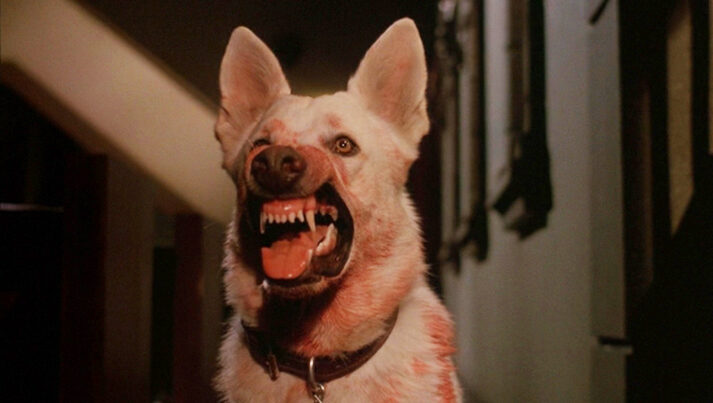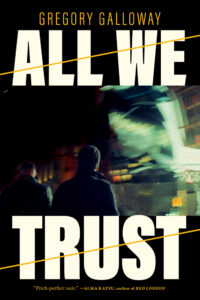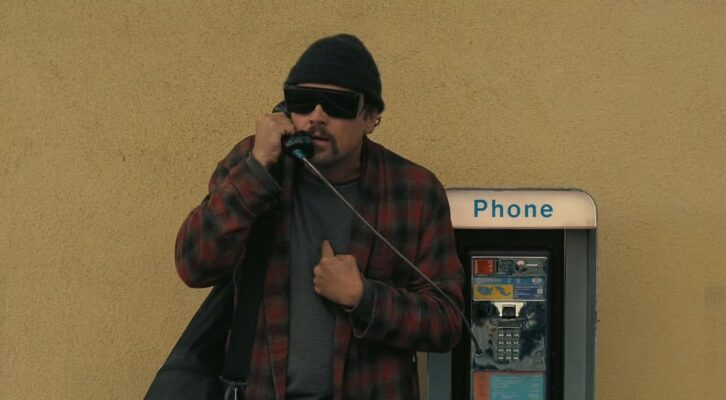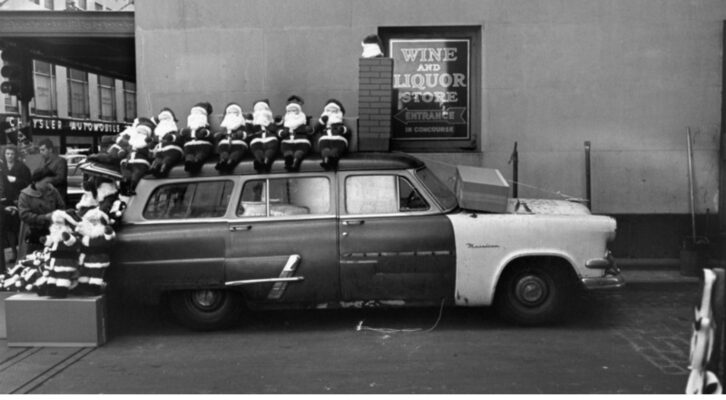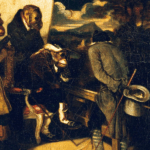Dogs are a staple in crime novels and films, from faithful companions to indispensable sidekicks, from Dashiell Hammett’s The Thin Man (Asta, a schnauzer in the novel, terrier in the films), to Robert Crais (Maggie, a German shepherd), Sara Driscoll (Hawk, a Labrador), Paula Munier (Elvis, a Malinois), Alan Russell (Sirius, German shepherd) dogs are helping to solve cases. Even Sherlock Holmes needed Toby in The Sign of the Four and Pompey in “The Adventure of the Missing Three-Quarter.” But those are good dogs. I’m more interested in dogs on the other side of the law; I’m interested in bad dogs. And while there’s plenty of dogs like Cujo and the whole pack of rabid, crazed, medically modified, demonic, zombied, vampired animals, most writers seem reluctant to include a literal crime dog (Confession: neither could I. My latest novel, All We Trust, prominently features a dog, but his criminal owner uses him to threaten and intimidate people based more on their fears and perceptions than inherent “badness” in the dog). But here’s a few who come close, with man’s best friend as accomplice or out and out criminal.
Agatha Christie seemingly has a couple of criminal canines, in Dumb Witness (1937, and dedicated to Christie’s dog Peter) the wire-haired terrier, Bob, is blamed for an accident in the house (not that kind of accident) that turns out to be attempted murder. By the time Hercule Poirot is alerted, an actual murder has taken place. No homicidal dog here, but a family member after an inheritance trying to frame Bob, who leaves with Poirot at the end of the novel. And in the 1939 short story “The Nemean Lion” a Pekingese named Augustus is an unwitting accomplice in a dognapping scheme run by a group of ladies hired by rich women as companions.
Arthur Conan Doyle is closer with The Hound of the Baskervilles (1901. Eight years after Sherlock Holmes disappeared over a waterfall, Doyle brought him back in a gothic tale of a demonic dog that turns out to be a savage hound painted with phosphorous, used to terrify and kill everyone who stands in the way of a large inheritance.
W.R. Burnett’s High Sierra (1940) features a serial killer dog, of sorts. Anybody who takes in the “mongrel” Pard winds up dead, at least the 3 previous owners. Now everyone is afraid to get attached to Pard, except bank robber “Mad Dog” Earle, who ignores the curse and takes Pard with him (Pard was played by Bogart’s own dog, Zero). The 1941 film version (co-written by Burnett and John Huston) is more explicit about the curse than the novel, as Pard’s bark reveals Earle’s location as he’s hiding in the mountains, and the robber is shot dead (the film ends with Marie, played by Ida Lupino, carrying Pard—and perhaps the curse—with her). In the 1955 remake, Earle (Jack Palance) is directly warned of Pard’s “hex” and Earle tries to leave Pard behind twice, but the dog (and fate) still catch up with him.
The Outfit (1973), based on Donald E. Westlake’s 1963 novel (published under the name Richard Stark), the film features a German shepherd who barks when the killers come for Eddie Macklin, and later a white German shepherd attacks Cody (Joe Don Baker) at the command of Buck’s wife (Sheree North) when Cody and Earl Macklin (Robert Duvall) get their getaway car (in the novel, the dog is killed), and while its mentioned that Mailer’s house is guarded by dogs, they do little to prevent Cody and Earl from breaking in (the Dobermans are shown doing little more than lounging around in a brief scene in the film).
Thomas M. Disch provides one of the more entertaining (and totally berserk) killer dogs in The Businessman: A Tale of Terror (1984). Although more a “horror” novel than crime fiction, the story features Sugar, a demonic Scots terrier who tries to help a murderer get away with his crime (mostly by viciously attacking and killing anyone who suspects the murderer of his crime). And when the dog is finally dealt with, its “soul” goes on to wreak havoc in another being, a child (who ever said to never work with children or animals?).
Romain Gary portrays the most realistic (and most disturbing) criminal animal in White Dog (1970). In 1968, Gary and his then-wife Jean Seberg rescued a German shepherd that had wound up at their Hollywood home, only to discover that it was a “white dog,” trained to attack black people. Gary wrote about his experience in a cover story for Life magazine, and the novel is a fictionalized “memoir” of sorts. The dog is taken to an animal trainer to see if his behavior can be corrected, the white trainer says it’s impossible, but a black trainer is willing to try. Gary uses the dog to investigate racism (as well as Hollywood hypocrisy and): is it inherent or a learned behavior? Published in both French and English, Gary changed the ending of the English version to be more “optimistic.” A film version was in development as early as 1975 but was not completed until 1981, with Sam Fuller directing and adapting the novel (with Curtis Hanson). Fuller removes Gary almost completely from the story (as well as much of the politics), eliminates a key element of the novel (in which the black trainer reconditions the dog to attack whites), focusing instead on the dog. And Fuller’s version is almost a crime film, with the white dog (once referenced to as “Mr. Hyde”) depicted as a prisoner (there’s even a “prison break” scene), and the climax of the movie an allusion to the showdown at the end of The Good, the Bad, and the Ugly (Ennio Morricone provided the soundtrack to both films). In an interview, Fuller acknowledged the “crimes” of the dog, but also makes the allegory explicit: “In Frankenstein, the monster’s crimes were great, but the greater crime was Dr. Frankenstein’s, for having created the monster.” Fuller’s version was released for one week in Detroit in November 1981 before shelving it for almost a decade. A Canadian production (Chien Blanc), which more closely follows the novel, was released in 2022.
But let’s end on a lighter note, with a feel-good story of dogs as entertaining and intelligent crooks. The Doberman Gang (1972) involves six Doberman Pinschers (all named after famous criminals) trained to rob a bank. Mostly light-hearted, this low-budget film takes an outlandish premise and makes it (somewhat) believable, with attention paid to training the dogs for their heist. It spawned 2 sequels, The Daring Dobermans (1973) and The Amazing Dobermans (1976), as well as a TV movie, Alex and the Doberman Gang (1980)—all directed by Byron Ross Chudnow—where the dogs (now named after movie stars, including Humphrey Bogart) help a private detective solve cases. They were better as crooks.
___________________________

